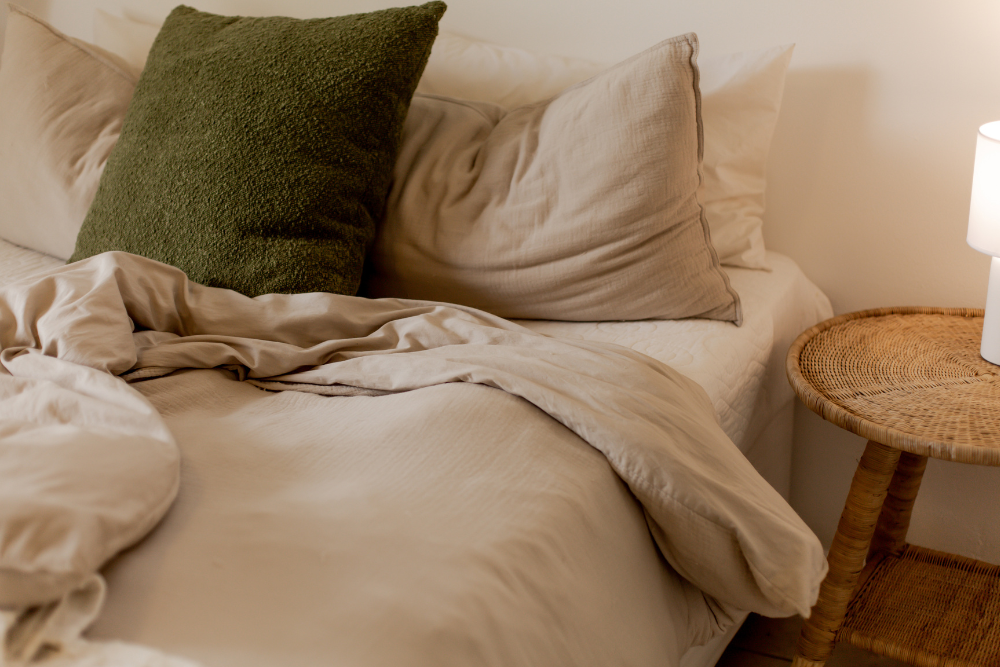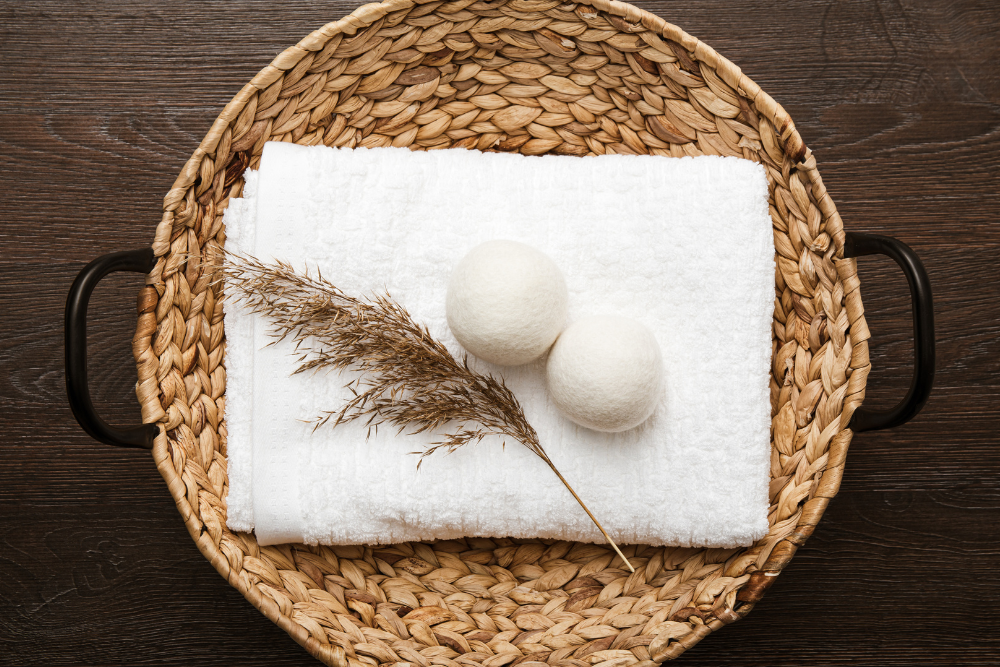Add description, images, menus and links to your mega menu
A column with no settings can be used as a spacer
Link to your collections, sales and even external links
Add up to five columns
Add description, images, menus and links to your mega menu
A column with no settings can be used as a spacer
Link to your collections, sales and even external links
Add up to five columns
Wool Bedding for Year-Round Comfort
June 04, 2019 2 min read
If you’re new to the concept of wool bedding, you might be a little skeptical about how comfortable it’ll be for sleeping. Maybe you think of wool in terms of those thick socks and sweaters you bring out of storage at the first sign of frost and pack away again in the spring. Or maybe you have recollections of itchy, heavy wool blankets. With those frames of reference, you could be thinking pillows, comforters, and mattresses made with wool would be hot and uncomfortable. We can assure you the exact opposite is true.

The Science of Year-Round Wool
Wool does a terrific job of keeping you warm in the winter and is a superstar fiber when it comes to moisture wicking. It’s why wool is our go-to option when it’s time to bundle up for colder weather. The basic science is simple: wool fibers absorb moisture and release it into the air.
When you’re wearing wool clothing or sleeping with wool bedding in the colder months, this process pulls perspiration from the skin and efficiently disperses it before you even feel the sweat. The evaporative properties of wool allow it to absorb up to a third of its weight in moisture without ever feeling damp, and the natural crimp of the fibers creates tiny pockets that trap warm air for an insulating effect. You stay warm and dry surrounded by a consistent, low-humidity microclimate.
These same processes are at work in warm weather, producing a cooling effect right when you need it. Those tiny pockets are just as efficient at trapping cool air and keeping you insulated from the warming outside air. The wool continues to pull moisture away from your body, keeping you comfortable and dry as the temperatures climb. These qualities also make wool the perfect choice for partner sleeping. People overheat and perspire at different rates. Wool maintains the microclimate of each individual at their optimum comfort level.

Sleeping With Wool
An uninterrupted good night’s rest is essential to health and well-being. The better you sleep, the more productive your waking hours will be. Research has shown that wool bedding (and wool sleepwear) results in a deeper, more restful sleep. Study participants slept more comfortably, tossed and turned less, and woke less frequently during the night. The temperature-regulating, moisture-wicking properties of wool combine to create the ideal sleep environment.
This is especially good news when it comes to your little ones. Research has also found that infants sleep more peacefully and less fitfully on wool bedding, and underweight newborns sleeping on wool thrive at a higher rate than those sleeping on cotton. In addition, preschoolers sleeping on wool are less likely to experience sleep problems than children sleeping on synthetic bedding. (See link below for details.)

The lightweight wool we use in all our bedding products is an outstanding, breathable insulator. The natural miracle of its fibers keeps you comfortable season after season. Not too hot, not too cold. Just right, all year round.
Wool and Sleep, International Wool Textile Organisation
Leave a comment
Comments will be approved before showing up.
Also in Blog

Organic Luxury for Cooler Nights
October 14, 2025 3 min read
As the days grow shorter and the air takes on that familiar crispness, fall gently nudges us to slow down. And there’s no better way to embrace this shift than by transforming your bedroom into a sanctuary of warmth and rest.

Wool Dryer Balls: The Sustainable, Healthy Swap Your Laundry Needs
September 01, 2025 3 min read
One of the simplest changes you can make toward a healthier, more sustainable home is swapping out single-use dryer sheets for long-lasting wool dryer balls. Unlike dryer sheets, which release synthetic fragrances, harsh chemicals, and microplastics with every load, wool dryer balls offer a clean, natural alternative that’s better for you, your family, and the planet.

Helping Kids Get the Sleep They Need: A Back-to-School Sleep Guide
August 08, 2025 4 min read
If the summer break turned your little one into a night owl, don’t worry, you’re not alone. Many parents are wondering how to guide their children back into healthy sleep routines that support their growth, learning, and overall well-being.
The good news? With a few thoughtful changes and some cozy rituals, getting your kids back on track can be gentle, natural, and even enjoyable.
Subscribe
Sign up to get the latest on sales, new releases and more …
